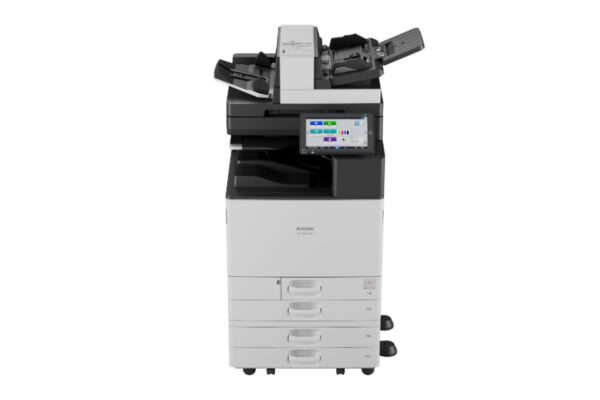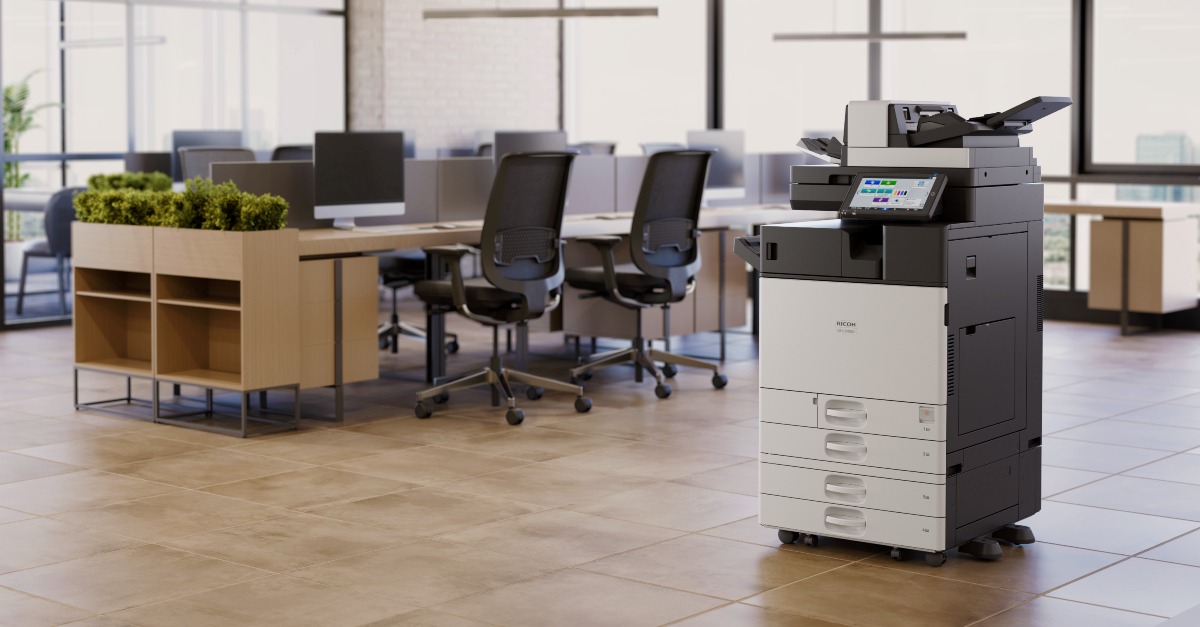Ricoh USA is raising the bar for its MFPs with its new intelligent color A3 lineup. These new SD Series models, including the Ricoh IM C3510SD, IM C4510SD, and IM C6010SD, feature a straight-path automatic single-pass document feeder (SPDF) designed to redefine what customers expect from office-based scanning.
The new models break from the limitations of traditional MFP scanning, offering a level of media flexibility and post-scan accuracy previously only found in dedicated production scanners. Thanks to scanning technology from PFU Limited, a consolidated subsidiary of Fujitsu Limited, that Ricoh Company Ltd. acquired in 2022, the SD Series enables seamless batch scanning of everything from fragile thermal paper and rigid ID cards to odd-sized receipts, without jams, alignment issues, or operator frustration.
A New Era for MFP Scanning
“The reason to be excited about this is it’s really kind of a radical departure on the scanning side for an MFP,” said Bob Crocetti, senior product manager, Ricoh USA. “The MFPs that we’ve all been selling for decades now do a pretty good job of scanning, but they’re not up to the level of what a dedicated scanner can offer as far as the variety of media they can feed and the post-scan image correction.”
Now, customers can get production-class scanning directly from their MFP for a modest premium over standard MFP pricing. For organizations with moderate to heavy scanning workflows, particularly in healthcare, education, legal, and logistics, this represents a substantial opportunity to reduce manual effort and improve throughput. “Almost every vertical has at least some horizontal application,” said Crocetti.

To be clear, these new models with this advanced scanning capability aren’t a replacement for high-end production scanners. “This addresses the middle of the market—maybe 80%–where they don’t have a real scanner,” observed Crocetti.
Meanwhile, a traditional MFP is still an option for some scan jobs. “If you’re doing an occasional stack of nice, neat 8 ½ x 11 [documents], no problem, your current MFP is perfect,” noted Crocetti.
The premium for this capability ranges from 10% to 13%, depending on the model. “It’s reasonable and will pay for itself, especially on a $20 a month lease,” said Crocetti.
Real-world Labor and Cost Savings
Crocetti cited multiple real-world examples of how the SD Series saves time and money. At a healthcare customer site, he observed staff spending more than 30 seconds manually scanning health insurance cards, a repetitive process that added to hours of wasted labor over time. With the SD Series, that process is reduced to around 12 seconds: drop the card in the feeder, press a button, and move on.
“You save 20 seconds, but 20 seconds, a hundred times a day, times five years on the lease is a lot of labor,” he explained. “To save that kind of hours of labor, it’s not hard to justify [the premium].”
He also referenced a school he visited where office staff were forced to manually copy stacks of small, torn permission slips. Now they can drop these on the scanner, and no matter the condition of the document, it will feed because the MFP’s feeder has a straight paper path. The result? Faster processing, fewer jams, and less frustration.
A Competitive Edge
According to Crocetti, the excitement around the SD Series has been significant among Ricoh’s dealer community. “Every rep I’ve talked to, all the dealer salespeople I’ve talked to, they’re all like, ‘Yeah, I can see this,’” he said. Even service techs are celebrating. “One service manager on the West Coast said, ‘Not only am I going to recommend this product to sales, I’m going to make them sell it to 10% of my accounts that are driving me crazy because I’m sending somebody out every three weeks to fix the document feeder,’” reported Crocetti.
Ricoh’s remote diagnostics data shows that about 25% of service calls are related to document feeders, mostly jams. “If we can eliminate 25% of those 25%, that’s like a 7% drop in the number of times they have to roll a truck out to the customer,” said Crocetti. “So, getting a 7% reduction in overall service costs these days is almost stunning.”
A New Talk Track for Dealers
In a flat-to-declining A3 market, Ricoh’s SD Series gives dealers a new story to tell. “This is kind of a quantum leap forward, at least in the scanning portion of it,” said Crocetti, who referenced an IDC report that predicts scanning on MFPs to increase by 50% over the next three years. “This allows the rep to say, ‘Hey, I got something new I want to show you,’” observed Crocetti. “This could be the killer app and get them in the door for accounts they haven’t been able to penetrate yet, or cement the relationship for those they already have.”
No Close Competitor—Yet
The advanced scanning capabilities of its new MFPs give Ricoh a jump over its competitors. “We’ve not seen anything that even remotely resembles this,” said Crocetti. “I don’t expect anybody to have anything like this in the near term. And some competitors probably will never be able to get there because they don’t have the scanning expertise that we acquired when we acquired PFU.”
With shipments beginning soon and broad availability expected within weeks, Ricoh’s SD Series is poised to help customers rethink what’s possible with office scanning, while giving dealers a potent edge in a crowded market.
“For a fairly small premium over what you would pay for the MFP that you’re going to buy anyway, now you can get production-class scanning,” emphasized Crocetti. “The value proposition is very strong if you’ve got any kind of substantial scanning in your workflow.”




